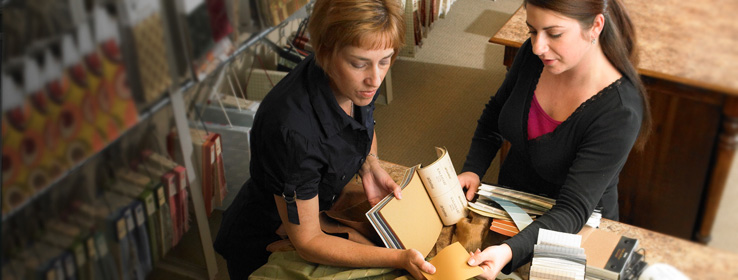Discover ways to help your clients break out of the bland and develop a personal color style all their own.
Mark McCauley, interior designer and author of Color Therapy at Home: Real-Life Solutions for Adding Color to Your Life, says using color can be scary, which is why most Americans choose beige for decorating, because it's "the absence of making a statement." McCauley encourages clients to resist the bland and develop a personal style that reflects who they are – and accept that it may change over time.
Margaret Walch, director of the Color Association of the United States, told HGTV Ideas magazine that when she first moved to New York City, she "brought the prevailing colors of the time, high-tech black and gray with maybe a little red accent." Ten years later, she says she's moved away from that look and now has yellow walls and rich honey colors in her home.
"It's a lot more color than I've ever lived with before. Aside from light, I can think of nothing as benevolent in our lives as color," Walch says.
Because it's one of the quickest and least expensive ways to change a home over time, painting is the ideal way to break out of the beige. Following are some tips to help you convince your clients to accept color.
Discuss goals and preferences. When talking with your clients about color, elicit the types of moods they're hoping to set in the environment, such as calming and welcoming or energizing and dramatic. This approach will help them articulate their feelings about how they want to live in the home, which will assist you in developing a plan to transform the space.
Help them understand what color can and can't do. Once you have an idea of their overall vision, ask about specific issues. Do they want particular rooms to appear larger or smaller, or are there certain aspects they'd like to camouflage? This is a great opportunity to discuss the power of color. It's also a chance to set expectations, because no amount of light-colored paint will make a small bathroom feel palatial.
Address their concerns about flow. A common color fear is that it'll reduce the sense of flow in a home. Explain your techniques for increasing color unity between rooms, such as using the color of one room as an accent color in another. A warm red in one room could be carried through to another in the form of red throw pillows or a red painting, McCauley says.
Work with beloved objects. Take cues from the colors your clients like to wear and special items they own. A normally color-shy client may appreciate a new color if it's chosen to highlight a favorite work of art, a family antique or a beloved bedspread.
Include visual tools. Manufacturers offer a variety of tools to help you show your clients what the new color will look like in the home. One of the most creative is the Sherwin-Williams Color Visualizer, an online tool that lets users select rooms and house styles and, with a just a click, experiment with interior and exterior colors.





